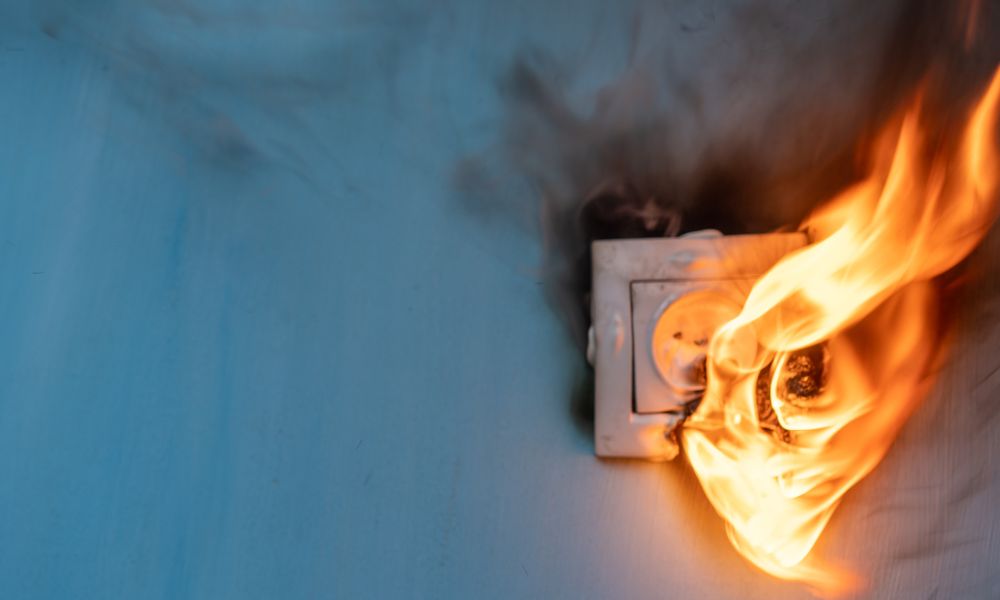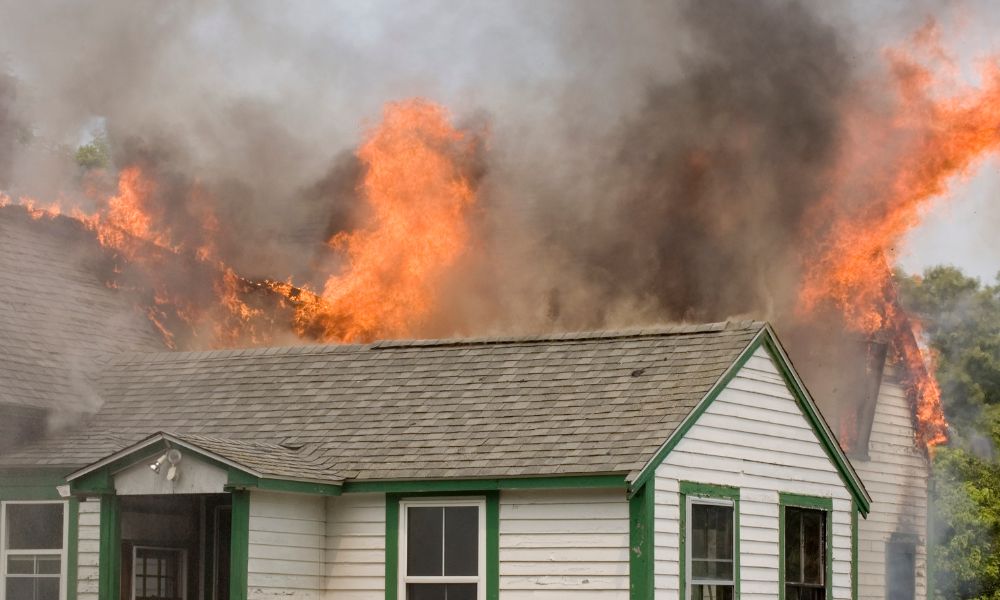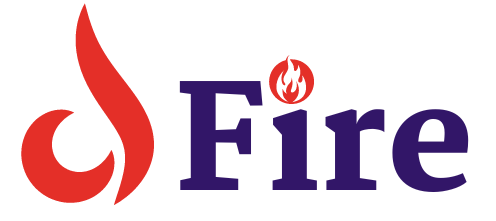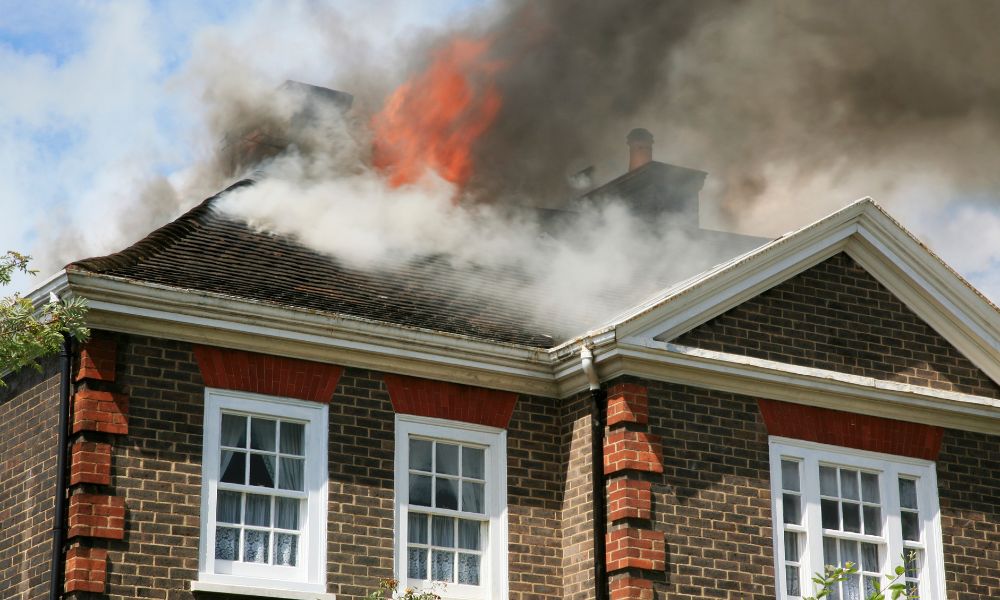A fire safety plan is a crucial aspect of home safety. It helps you and your family prepare for the worst-case scenario, giving you peace of mind knowing that you are ready in case of an emergency. A fire can happen at any time, and having a plan in place can save lives. In this article, we will discuss how to make a fire safety plan for your home.
The first step in creating a fire safety plan is to identify the potential fire hazards in your home. This includes things like candles, cooking appliances, electrical equipment, and heating sources.
Once you have identified these hazards, you can take steps to minimize the risk of a fire. For example, make sure that all electrical equipment is in good working order, and avoid overloading outlets. You should also ensure that you have working smoke detectors throughout your home.
Identifying Fire Risks for Your Home
Identify Potential Hazards
Before creating a fire safety plan for your home, it’s important to identify potential hazards that could increase the risk of a fire. Some common hazards include:
- Flammable materials: Keep flammable materials such as paper, cardboard, and cleaning supplies away from heat sources.
- Electrical appliances: Faulty or damaged electrical appliances can cause a fire. Make sure to inspect all appliances regularly and replace any damaged cords or plugs.
- Smoking: Smoking is a leading cause of house fires. Encourage smokers to smoke outside and dispose of cigarettes in a safe manner.
- Cooking: Cooking is another common cause of house fires. Never leave cooking unattended and keep flammable objects away from the stove.
Types of Fires

There are different types of fires, and each requires a different approach to extinguish it. Knowing the types of fires can help you prepare for a fire emergency.
- Class A: This type of fire involves ordinary combustibles such as wood, paper, and cloth. Extinguish it using water or a fire extinguisher.
- Class B: This type of fire involves flammable liquids such as gasoline and oil. Extinguish it using a fire extinguisher specifically designed for flammable liquids.
- Class C: This type of fire involves electrical equipment such as appliances and wiring. Extinguish it using a fire extinguisher specifically designed for electrical fires.
- Class D: This type of fire involves combustible metals such as magnesium and titanium. Extinguish it using a dry powder fire extinguisher.
By understanding potential hazards and the different types of fires, you can create a fire safety plan that is tailored to your home’s specific needs.
Designing Fire Safety Plan for Your Home
When designing a fire safety plan for your home, it’s important to consider all possible scenarios and create a plan that is easy to follow for all members of the household. The following subsections will guide you through the process of designing your fire safety plan.
1. Escape Routes
Identifying escape routes is a crucial part of any fire safety plan. It’s important to have at least two escape routes from each room in the house, in case one is blocked by fire or smoke. Make sure all windows and doors can be easily opened and are not blocked by furniture or other objects.
Create a map of your home and mark all possible escape routes. Share this map with all members of the household and make sure everyone knows the quickest and safest way out of the house in case of a fire.
2. Safe Meeting Point
Choose a safe meeting point outside the house where everyone can gather after escaping. This could be a neighbor’s house, a mailbox, or a tree in the front yard. Make sure everyone knows the location of the meeting point and that it’s far enough away from the house to be safe.
3. Fire Drills and Practice
Practice makes perfect, and this is especially true when it comes to fire safety. Conduct regular fire drills with all members of the household, including children, to ensure that everyone knows what to do in case of a fire.
During the fire drill, simulate different scenarios, such as blocked escape routes or a family member being trapped in a room. This will help everyone be prepared for any situation that may arise.
Remember, having a fire safety plan is only effective if everyone knows and understands it. Make sure to review and practice your plan regularly to ensure that everyone is prepared in case of a fire.
Fire Safety Equipment and Tools for Your Home

Ensuring fire safety in your home is crucial for protecting yourself, your loved ones, and your property. Here’s a list of essential fire safety equipment and tools every home should have:
1. Smoke Alarms: Install smoke alarms on every level of your home, including inside bedrooms and outside sleeping areas. Test them monthly and replace batteries as needed.
2. Carbon Monoxide Detectors: Carbon monoxide is a silent killer. Install detectors near sleeping areas and on every level of your home. Test them regularly and replace batteries as needed.
3. Fire Extinguishers: Keep at least one fire extinguisher on each level of your home, particularly in the kitchen, garage, and near fireplaces. Make sure everyone in your household knows how to use them properly.
4. Fire Blanket: Fire blankets are useful for smothering small fires, wrapping around someone whose clothes are on fire, or escaping from a fire by wrapping it around yourself.
5. Escape Ladder: If you have multiple stories in your home, consider keeping a fire escape ladder in each upstairs bedroom. These can be deployed quickly to provide a safe means of exiting through a window in case of a fire.
6. Emergency Exit Plan: Develop and practice a fire escape plan with your family. Identify multiple escape routes from each room and establish a designated meeting place outside.
7. Fireproof Safe: Store important documents, valuables, and irreplaceable items like passports and birth certificates in a fireproof safe to protect them in the event of a fire.
8. Fire-Resistant Gloves: These are useful for handling hot objects during a fire emergency, such as opening doors or moving debris.
9. Fireproof Storage Containers: Store flammable liquids like gasoline, paint, and propane in approved fireproof containers away from the house, preferably in a shed or garage.
10. Fireplace Tools: If you have a fireplace, keep tools like a poker, shovel, and brush nearby to safely manage the fire.
11. Flame Retardant Spray: Consider treating furniture, curtains, and other flammable items with a flame retardant spray to reduce their susceptibility to catching fire.
12. Fire-Resistant Clothing: Keep a set of fire-resistant clothing or thick, long-sleeved shirts and pants to wear during a fire emergency to protect your skin from heat and flames.
13. Emergency Contacts List: Keep a list of emergency phone numbers, including the fire department, police, and poison control, in a visible location such as on the refrigerator or near a phone.
Regular maintenance, inspection, and testing of your fire safety equipment are essential to ensure they remain in good working condition. Additionally, educating yourself and your family about fire safety practices can help prevent accidents and minimize the risk of injury or property damage.
Maintenance and Prevention of a Fire Safety Plan
1. Regular Checks
Regular checks are essential in maintaining a fire safety plan. Smoke detectors should be tested every month to ensure they are functioning correctly. The batteries should also be replaced every six months. It is also important to check that fire extinguishers are not expired and are in good working condition.
Heating systems should be inspected annually by a professional to ensure they are working correctly and not posing a fire hazard. Electrical cords and appliances should also be checked regularly for any signs of damage or wear and tear.
2. Safety Tips
Prevention is key in fire safety. Smoking should be avoided inside the house, and candles should be kept away from flammable materials. It is important to keep a clear space around heaters and other heat sources.
A fire safety plan should also include a designated meeting place outside the home and a clear escape route. The plan should also be reviewed and practiced regularly with all members of the household.
In case of a fire, it is important to stay low to the ground and crawl to the nearest exit. If a door is hot, do not open it, and use an alternate exit if possible. It is also important to never re-enter a burning building.
By following these maintenance and prevention tips, homeowners can help ensure the safety of their families and their homes.
Communicating Your Fire Safety Plan

Once you have created your fire safety plan, it is important to communicate it to everyone in your household. This will ensure that everyone knows what to do in case of a fire emergency.
1. Family Discussions
Gather your family members together and discuss the fire safety plan. Ensure that everyone understands the escape routes, the meeting place, and the designated person responsible for calling the emergency services. It is important to practice the plan regularly to ensure that everyone is familiar with it and can act quickly in case of a fire.
2. Information for Guests
If you have guests staying in your home, it is important to inform them about the fire safety plan. Provide them with a copy of the plan and explain the escape routes and meeting place. Make sure they know how to call the emergency services in case of a fire.
It is also important to inform your guests about any fire hazards in your home, such as candles or open flames. Make sure they know how to use any fire safety equipment, such as fire extinguishers or smoke alarms.
By communicating your fire safety plan to your family members and guests, you can ensure that everyone is prepared and knows what to do in case of a fire emergency.
What to Prepare in Case of fire at Home?
In preparation for a fire at home, it’s crucial to have several key items and plans in place. Firstly, ensure that smoke alarms are installed on every level of the home and inside each bedroom, regularly testing and maintaining them.
Equipping each level with multipurpose fire extinguishers, especially in areas prone to fire hazards like the kitchen, is vital. Establish clear escape routes from every room and designate a safe meeting point outside.
Additionally, keep a list of emergency contacts, including local fire departments and police, readily available. Prepare an emergency kit stocked with essentials such as water, non-perishable food, flashlights, batteries, and a first aid kit.
Safeguard important documents in a fireproof safe or off-site location, and plan for the evacuation of pets. Regular maintenance of fire safety equipment and ongoing education for all household members on fire safety practices further bolster preparedness for potential fire emergencies.
Fire Escape Plan 2-Story House
Creating a fire escape plan for a two-story house involves careful consideration of the layout and ensuring that all occupants understand the steps to take in the event of a fire emergency. Here’s a suggested fire escape plan for a two-story house:
1.Map Out the Floor Plan: Begin by drawing a floor plan of your home, indicating all rooms, windows, doors, and possible exit routes from each floor.
2. Identify Primary and Secondary Exits: Determine primary and secondary exit routes from each room on both floors. Primary exits are typically doors, while secondary exits can include windows or alternative routes.
3. Install Smoke Alarms: Ensure smoke alarms are installed on each level of the home and inside each bedroom. Test them regularly and replace batteries as needed.
4. Practice Safe Escape Routes: Teach household members to check door handles for heat before opening doors. If the door is hot, instruct them to use an alternative exit. Crawl low under smoke to avoid inhalation of toxic fumes.
5. Escape from Upper Floors: If on the upper floor and the primary exit is blocked, use a window as an alternative escape route. Consider installing escape ladders for upper-story windows and ensure that everyone knows how to use them.
By following these steps and regularly practicing your fire escape plan, you can help ensure the safety of your household in the event of a fire emergency.
Developing a fire safety plan for your home is essential for the safety and well-being of you and your loved ones. By following the steps outlined above, you can create a comprehensive plan that prepares everyone in your household to respond effectively in the event of a fire emergency. Remember to regularly review and update your plan as needed, and to practice fire drills to ensure that everyone knows what to do in a real emergency. By taking these proactive measures, you can help minimize the risk of injury or harm and increase the chances of a safe evacuation in the event of a fire.
Frequently Asked Questions: Fire Safety Plan for Your Home
What are the essential elements to include in a home fire safety plan?
A home fire safety plan should include a map of your home with all possible exits marked, a designated meeting place outside the home, and a list of emergency phone numbers. It is also important to have working smoke detectors in every bedroom and on every level of the home.
How can I develop a fire escape plan for a two-story house?
When developing a fire escape plan for a two-story house, it is important to have at least two ways out of every room. This can include a window or a collapsible ladder. It is also important to practice using these escape routes with all members of the household.
What are the steps to create a comprehensive fire evacuation plan for my family?
To create a comprehensive fire evacuation plan for your family, start by identifying all possible exits from your home and designating a safe meeting place outside. Make sure everyone in the household knows the plan and has practiced using the escape routes. It is also important to have a plan in place for any family members with mobility issues or special needs.
Where can I find a free printable template for a fire escape plan?
There are many free printable templates available online for creating a fire escape plan. The National Fire Protection Association offers a printable template on their website, as do many local fire departments.
How should I prepare my household for a potential fire emergency?
To prepare your household for a potential fire emergency, make sure everyone knows the escape plan and has practiced using the escape routes. It is also important to have working smoke detectors in every bedroom and on every level of the home. Make sure everyone knows how to use a fire extinguisher and where they are located.
What are the best practices for writing a fire protection plan for a home?
When writing a fire protection plan for a home, it is important to identify all potential fire hazards and take steps to mitigate them. This can include installing smoke detectors, keeping flammable materials away from heat sources, and having a plan for cooking safety. It is also important to have a plan in place for any family members with mobility issues or special needs.

I’m Abdus Sobur, a highly skilled and professional Fire Safety Officer with a passion for safeguarding lives and property. Over the course of my career, I’ve conducted numerous successful fire safety audits, earning a reputation for excellence in ensuring public safety.
In addition to my role as a Fire Safety Officer, I’m also dedicated to raising awareness about the importance of fire safety. Through my blog, I share insights into the functions of different fire safety equipment, aiming to empower individuals with the knowledge they need to protect themselves and their communities.
I’m driven by a deep commitment to promoting fire safety awareness and preventing fire-related incidents.

